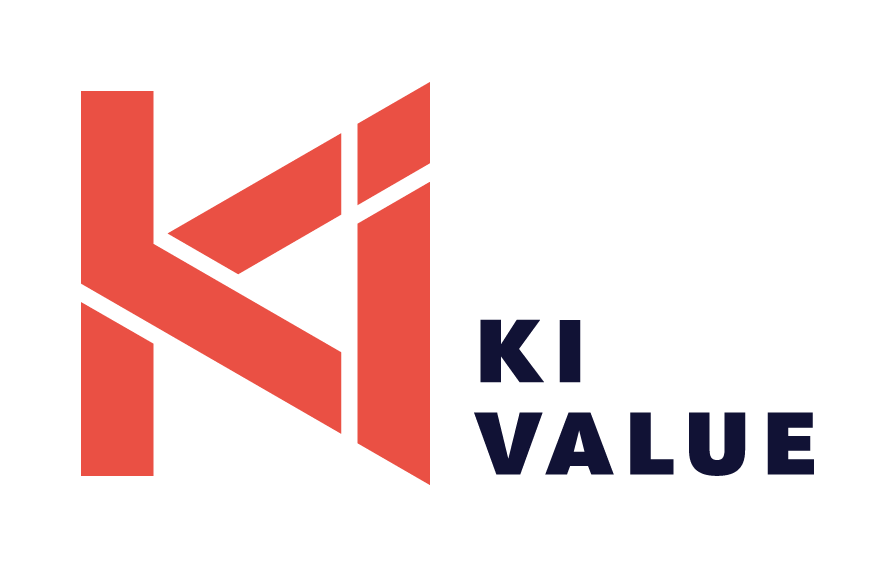To make KIVALUE work and improve your user experience, we log user data and employ essential cookies. By using KIVALUE website, you agree to our Privacy Policy, including cookie policy.
New Partnership with Pricen in Italy: Read Here
BLOG //
Transforming Retail: The Role of Generative AI in Merchandise Planning
Merchandise planning is the heartbeat of any successful retail operation. The strategic process involves deciding what products to offer, how much, and when, to maximise sales and profits. Retailers are using generative AI to improve merchandise planning in a changing consumer landscape.
Generative AI is a part of Artificial Intelligence.
It can change merchandise planning by automating and optimising complex tasks.
In this article, we'll discuss how generative AI is changing merchandise planning in retail.
It improves efficiency, increases profits, and encourages innovation.
It can change merchandise planning by automating and optimising complex tasks.
In this article, we'll discuss how generative AI is changing merchandise planning in retail.
It improves efficiency, increases profits, and encourages innovation.
CONTENTS
//
//
//
//
//
The Landscape of Merchandise Planning
Before we talk about generative AI, let's first understand merchandise planning in detail. This process involves several critical components, including:
Merchandisers and planners traditionally manage each component. They use historical data, market knowledge, and gut instinct to make decisions. However, this approach has limitations in today's fast-paced, data-driven retail landscape.
Before we talk about generative AI, let's first understand merchandise planning in detail. This process involves several critical components, including:
- Demand Forecasting: Predicting customer demand accurately is fundamental to merchandise planning. Retailers must determine what products will sell, when, and where.
- Assortment Planning: Deciding which products to carry in stores and online is a balancing act. Retailers need to offer variety while avoiding overstocking or understocking.
- Inventory Management: Effective inventory management ensures that products are in the right place at the right time. It minimises carrying costs and stockouts.
- Pricing Strategy: Setting competitive and profitable prices is a core element of merchandise planning. Retailers need to consider factors like competition, cost, and consumer perception.
- Seasonal and Trend Analysis: Recognising trends and seasonality is crucial for planning product launches and marketing campaigns.
- Vendor Collaboration: Establishing strong relationships with suppliers and vendors is essential to secure the right products, quantities, and pricing.
Merchandisers and planners traditionally manage each component. They use historical data, market knowledge, and gut instinct to make decisions. However, this approach has limitations in today's fast-paced, data-driven retail landscape.
The Power of Generative AI in Merchandise Planning
Generative AI, powered by deep learning neural networks, is changing the merchandise planning game. It uses big sets of data, automates decision-making, and gives helpful insights to improve merchandise planning.
Generative AI, powered by deep learning neural networks, is changing the merchandise planning game. It uses big sets of data, automates decision-making, and gives helpful insights to improve merchandise planning.
1. Demand Forecasting
- Accurate Predictions: Generative AI can analyse large datasets, like sales history, consumer behaviour, weather, and social media. It makes accurate predictions about demand.
- Real-Time Adjustments: Retailers can always be well-prepared with real-time adjustments that update forecasts based on changing factors. These factors include unexpected events and emerging trends.
- Enhanced Inventory Management: Accurate demand forecasts lead to better inventory management. Retailers can avoid overstocking and understocking, reducing carrying costs and minimising stockouts.
2. Assortment Planning
- Personalised Assortments: Generative AI can create personalised assortments for different store locations or customer segments, tailoring product offerings to local preferences.
- Optimal Inventory Levels: It helps in determining the optimal inventory levels for each product, preventing overstocking or understocking situations.
- Reduced Markdowns: By better aligning assortments with demand, retailers can reduce the need for markdowns, preserving profit margins.
3. Inventory Management
- Dynamic Inventory Optimisation: Generative AI can optimise inventory levels in real-time, factoring in demand forecasts, lead times, and carrying costs.
- Minimising Stockouts: It proactively identifies potential stockout situations and suggests replenishment actions to prevent lost sales.
- Improved Supplier Relationships: AI-driven insights help in vendor collaboration by providing data on inventory levels and forecasts, streamlining ordering and replenishment processes.

4. Pricing Strategy
- Competitive Pricing: Generative AI can analyse competitor pricing and market dynamics to recommend competitive yet profitable pricing strategies.
- Dynamic Pricing: It enables retailers to implement dynamic pricing strategies that respond to changes in demand, competitor pricing, or external factors.
- Price Optimisation: Retailers can set prices that maximise both sales volume and profitability, achieving the optimal balance.
5. Seasonal and Trend Analysis
- Trend Identification: Generative AI can identify emerging trends by analysing social media, fashion blogs, and other online sources, helping retailers capitalise on new opportunities.
- Seasonal Planning: It assists in planning for seasonal shifts and adjusting product assortments accordingly.
- Marketing Strategy: Retailers can align marketing efforts with identified trends and seasonality to enhance campaign effectiveness.
6. Vendor Collaboration
- Optimising Supplier Relationships: Generative AI can analyse supplier performance data and recommend optimal ordering quantities, lead times, and terms.
- Communication Enhancements: It can streamline communication between retailers and suppliers by providing real-time data on inventory levels and demand forecasts.

Struggling with Merchandise Planning?
Discover how by scrutinising sales data and trend insights you can handpick the perfect blend of products for your customers.

Benefits of Generative AI in Merchandise Planning
- Enhanced Efficiency: Generative AI automates many tasks, allowing merchandisers and planners to focus on more strategic activities.
- Improved Accuracy: AI-driven forecasts and recommendations are based on data, reducing the reliance on subjective judgments and intuition.
- Real-Time Adaptability: Generative AI can respond quickly to changing market conditions, reducing the risk of overstocking or stockouts.
- Personalisation: Retailers can offer personalised assortments and pricing, enhancing the customer experience.
- Increased Profitability: AI-driven optimisation often leads to increased profits through better inventory management and pricing strategies.
Challenges and Considerations
While generative AI offers tremendous promise in merchandise planning, it's not without its challenges and considerations:
While generative AI offers tremendous promise in merchandise planning, it's not without its challenges and considerations:
Data Quality
AI relies heavily on data, so ensuring data accuracy and consistency is crucial.
Initial Investment
Implementing AI systems can be costly, both in terms of technology and training.
Human Oversight
AI systems should be viewed as tools to assist human decision-makers, not replace them entirely.
Ethical Concerns
Retailers must consider ethical implications, such as the use of customer data and the potential for bias in algorithms.
Integration Complexity
Integrating AI systems into existing merchandise planning processes can be complex and may require changes to workflows and systems.
Takeaway
Generative AI is revolutionising merchandise planning in retail by improving demand forecasting, optimising inventory management, enabling dynamic pricing, identifying emerging trends, and enhancing vendor collaboration.
Despite facing challenges, embracing generative AI is imperative for retailers to remain competitive and thrive in the rapidly evolving retail landscape.
Generative AI is revolutionising merchandise planning in retail by improving demand forecasting, optimising inventory management, enabling dynamic pricing, identifying emerging trends, and enhancing vendor collaboration.
Despite facing challenges, embracing generative AI is imperative for retailers to remain competitive and thrive in the rapidly evolving retail landscape.
At KIVALUE we cover end-to-end
fashion retail processes
fashion retail processes
From connecting merchandising, buying, and planning processes to omnichannel inventory and markdown management
We offer FREE assessment of your current solution requirements.
We offer FREE assessment of your current solution requirements.
ABOUT YOU Success Story to your Inbox
Just pop-in your name and email.
We value your information and won't share it with anyone.
We value your information and won't share it with anyone.
By clicking you agree to our Privacy Policy
let's talk!
Just pop-in your name and email.
We value your information and won't share it with anyone.
We value your information and won't share it with anyone.
By clicking you agree to our Privacy Policy
before we contact you
By clicking you agree to our Privacy Policy


